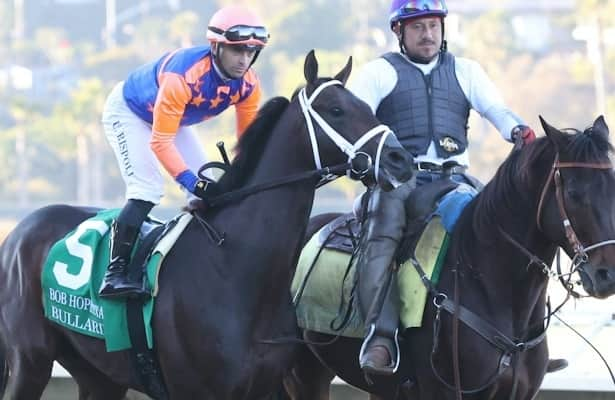Everything you need to know about the NFL kickoff rule change for 2024: ‘So much more exciting’

The cliché that special teams is one-third of football never has been truer.
Sure, the NFL introduced its new Dynamic Kickoff Rule during the preseason, but be careful drawing any conclusions just yet. The expectation is that special teams coordinators followed the precedent established by offensive and defensive play-callers and kept their best designs under wraps until the games count.
Do you really think every kicker is just going to deliver a flying ball inside the 5-yard line and let return units set up blocks?
“Nobody is going to show what they are actually going to run until it’s real because you are putting yourself at a competitive disadvantage,” one longtime special teams coach told The Post. “The first four or five weeks, this is going to be crazy.”
The NFL allowed its special teams coaches to collaborate and devise new kickoff rules — borrowed and tweaked from the XFL — on a one-year basis as a way to save a dying play.
An all-time low 21.8 percent of kickoffs were returned during the 2023 regular season — when fair catches were allowed inside the 25-yard line for the first time — and all 13 in the Super Bowl resulted in touchbacks.
Snooze!
“I just think it’s going to be so much more exciting for the fans,” Chiefs special teams coordinator Dave Toub said.
The dual-purpose objective became finding a way to bring back action to the kickoff while mitigating the elevated injury risk — especially for concussions (four times as likely as a scrimmage play) and torn ACLs — that exists when facilitating full-speed open-field collisions. The result looks similar to a traditional running play to some and foreign to others.
“It just feels weird,” Rams head coach Sean McVay said. “It doesn’t look like anything I’ve been familiar with in football.”
How it works
Other than the kicker and one or two returners, players from both teams must line up five yards apart in the “set-up zone” on the return half of the field and cannot move until the ball hits the ground or is touched. The ball is supposed to be kicked inside the landing zone — between the 20-yard line and the goal line — with field-position repercussions for touchbacks.
Giants special teams coordinator Michael Ghobrial has drawn up more than 50 different return variations.
“They want this play to succeed. This play has to succeed. Because if it doesn’t succeed, then what’s left?” NFL referee Alex Kemp said, before referencing the old schoolyard drive-start rules for playing football without a kickoff.
“What’s left is ‘losers walk’ — put it on the 25-yard line and losers walk [down the field]. The old way of the kickoff, we can’t do anymore — too many injuries. They really want this to be a dynamic, exciting play, so we save the kickoff, we save jobs and there’s excitement.”
Of the 420 preseason kickoffs, 70.5 percent were returned — including 18 returns of 40 or more yards — while only 26.4 percent were touchbacks, per NFL Research. That said, about 63 percent of kickoffs were returned last preseason because it typically is a time when returners are trying to make plays and earn roster spots.
The creators hope more than half of kickoffs are returned during the regular season.
“You’re going to see a lot more balls on the ground than what you’re seeing,” Jets special teams coordinator Brant Boyer said.
Under the new rule, there are three possible drive-starts if a kick is not returned: The 40-yard line if the kicking team hits the ball short of the landing zone, the 30 if the ball either lands in the end zone and is downed for a touchback or sails through the end zone, and the 20 if the ball hits in the landing zone, rolls into the end zone and is downed.
All balls in the end zone must be downed by the return team for a touchback. If a ball lands in the end zone and is not downed, the kickoff team can recover it for a touchdown.
The Chiefs had two returners make two different mistakes on one play in the preseason: One let a live ball sail over his head into the end zone and the other (Super Bowl hero Mecole Hardman) took a knee in the end zone after the ball bounced back across the goal line, which resulted in a safety.
“It’s a really good teaching moment,” Jaguars head coach Doug Pederson said.
The rule’s other wrinkles include a 12th player on the kickoff team — who must immediately run off the field — to serve as a holder if the ball won’t stay on the tee due to wind. And the elimination of the surprise onside kick — now only allowed to be attempted by the losing team, in the fourth quarter, after alerting officials.
How to take advantage
There is a misconception that dynamos with no prior return experience suddenly are going to volunteer for kick returns. In fact, special teams coaches are hunting for sturdier returners because of the possibility of big hits.
“If you haven’t done it, it’s not going to come easy to you just because they are all lined up in one spot,” said Isaiah McKenzie, who returned kicks for the Giants during the preseason. “It’s still a skill. As a returner, you have to kind of be like a loose screw a little bit to say, ‘I have to hit this hole no matter what happens, even if two people crash in on me.’ A lot of guys aren’t going to do that.”
There is a debate about whether the 30-yard line — instead of the 35, as originally was proposed — is enough of a deterrent to keep teams from aiming for touchbacks and thus eliminating the risk of allowing a big-gain return. Touchbacks unexpectedly became more popular among kicking teams even after the drive-start position moved from the 20 to the 25 in 2016.
If coaches didn’t mind surrendering five extra yards on defense then, why would they now?
Over the last 10 seasons, scoring percentage, touchdown percentage and points per drive all generally have increased in correlation with better starting field position, according to NFL Research. But there is a negligible difference between starting at the 30 instead of the 25: Scoring percentage rises from 34.6 percent to 34.9 percent, touchdown percentage drops from 21.1 percent to 20.6 percent and points per drive is 1.67 either way.
Concern around the league is that offensive-minded coaches especially won’t (literally) play ball.
“When you can start there at the 30 and the average starting line is the 29 [after a return], it doesn’t seem like there’s that much of a difference to really go with the risk of it,” 49ers head coach Kyle Shanahan said. “You always want to win the game on special teams, but the main thing is you don’t lose it.”
For the less risk-averse, what could happen this first month?
Expect two- or-three hoppers — not the same as the old squib kick — that give tacklers a running start before the ball is possessed.
“You’ve got to work the rectangle,” Raiders special teams coordinator Tom McMahon said of the 20-yard landing zone.
Expect some athletic offensive linemen and defensive ends on the field in place of traditional receivers, linebackers and safeties.
Expect loophole manipulations, like a blocker reaching up to touch a low, line-drive kick before it reaches the 20 to force a “landing-zone violation.”
Expect personnel substitutions in the huddle. The receiving team matches up last, like the home team on a hockey line change.
Expect some confusion from officials, who already have at least 18 different machinations of how to cover all angles of the play.
The Chiefs thought about having safety Justin Reid kick off to get an extra tackler on the field. Rugby player Louis Rees-Zammit tried to make the Chiefs as a returner and Gaelic football player Charlie Smyth tried to make the Saints as a kicker, but both were cut at the end of the preseason.
More creativity will be needed as more potential advantages are exploited — and then counteracted — once the real play designs are unveiled in Week 1.
“The problem is the ball can get up on you quick as a coverage team,” the special teams coach said. “If the ball is kicked to the 8, you don’t have to block a guy and the ball could be at the 25 with a free runner. There are a lot of coaches thinking, ‘This is the first play on defense.’”
Related
Giants: Saquon’s leadership void underestimated
Jordan Raanan, ESPN Staff WriterJan 2, 2025, 12:23 PM ETCloseJordan Raanan is a reporter for NFL Nation at ESPN. Raanan covers the New York Giants. You can foll
Ex-NFL star Antonio Brown launches fundraiser for New Orleans terror…
Former NFL star Antonio Brown launched a fund for the victims and their families of the terror attack that took place in New Orleans in the wee hours of New Ye
NFL Week 18 injuries and benchings: With playoff seeds on…
While the vast majority of fantasy leagues crowned their champions following Week 17, some leagues prefer to span the entirety of the NFL season. And that makes
Ringing in 2025: New Year’s Resolutions for all 32 NFL…
Ralph Vacchiano NFL Reporter The end of the calendar year signaled the near conclusion of












